Fort Bragg
KEY CONTACTS
Fort Bragg Housing Services
Soldier Support Center - 6th Floor
Normandy Dr.
Bldg. 4-2843
Main Post Fort Bragg, NC
PH: (910) 396-2626
Fort Bragg ACS
Soldier Support Center - 3rd Floor
Normandy Dr.
Bldg. 4-2843
Main Post Fort Bragg, NC
PH: (910) 396-8682
Most installation services will be available Monday through Friday, 9:00am to 4:00pm. As always, call first to confirm hours and availability of services.
Helpful hint: Contact these offices early in the week during the morning time
About Fort Bragg
 There comes a time in every paratrooper’s life when the path leads to the “Center of the Universe,” otherwise known as Fort Bragg, North Carolina. Dubbed the “Home of the Airborne and Special Operations Forces,” its central units include the XVIII Airborne Corps, the 82nd Airborne Division, United States Special Operations Command (USASOC), United States Forces Command and Army Reserve Command (FORSCOM), and 1st Special Forces Command—which includes 3rd Special Forces Group and 1st Special Warfare Training Group, a.k.a. the John F. Kennedy Special Warfare Center and School (SWCS or “Swick”). As a result of the Base Realignment and Closure Plan, Pope Air Force Base was absorbed into Fort Bragg and became Pope Field in 2011. The 43rd Airlift Group is the major Air Force unit at Pope Field.
There comes a time in every paratrooper’s life when the path leads to the “Center of the Universe,” otherwise known as Fort Bragg, North Carolina. Dubbed the “Home of the Airborne and Special Operations Forces,” its central units include the XVIII Airborne Corps, the 82nd Airborne Division, United States Special Operations Command (USASOC), United States Forces Command and Army Reserve Command (FORSCOM), and 1st Special Forces Command—which includes 3rd Special Forces Group and 1st Special Warfare Training Group, a.k.a. the John F. Kennedy Special Warfare Center and School (SWCS or “Swick”). As a result of the Base Realignment and Closure Plan, Pope Air Force Base was absorbed into Fort Bragg and became Pope Field in 2011. The 43rd Airlift Group is the major Air Force unit at Pope Field.
Fort Bragg has a proud culture and a rich history, dating back to its beginnings in 1918 as Camp Bragg, an artillery training ground named for the Confederate general Braxton Bragg. As part of the 2021 NDAA, Congress has mandated that all bases named after Confederate soldiers be renamed by 2023. So, a change could be coming—unless a suggestion to rename the installation after a cousin of the original namesake, Edward Bragg, who fought for the Union Army, is successful. Soldiers from Fort Bragg have participated in every war since World War I. “All American” paratroopers from the 82nd are most famous for jumping behind enemy lines during World War II, and the Division has been America’s vanguard in every crisis since.
This massive installation is one of the largest in the world, covering over 251 square miles in four counties in the Piedmont region of North Carolina. It is home to more military personnel than any other Army installation in the United States. Its proximity to the East Coast lifeline, I-95, provides easy access to most of the Eastern Seaboard. For trips within NC, you can expect to drive an hour and twenty minutes to Raleigh, a little over two hours to Carolina Beach and Wilmington, and around three hours to Charlotte. Weekend travel to the Mid-Atlantic, New York, the Blue Ridge Mountains, and any of the gorgeous beaches that adorn the Carolina coastline is feasible and a huge perk of living in this area.
Fort Bragg is Fayetteville’s top employer and the backbone of the region’s economy. There’s an abundance of retail businesses and local- and state-sponsored recreation programs, and the area continues to grow and attract new amenities. Some of the most recent additions to the site include a Houston Astros affiliate Minor League baseball team, the Fayetteville Woodpeckers, and more breweries and taprooms to count! You’ll find the surrounding communities supportive of the military and highly hospitable. The Carolina summers are long, hot, and extremely humid. However, the “winters” are generally mild, which translates to year-round play for golf enthusiasts. You can live out in the country, in quaint small towns that scream “Americana,” in a bustling city, in the ‘burbs, or in pine-forested seclusion. There’s truly something for everyone here!
Looking at relocating?
Enter your information below and we will reach out to help the process.
Nearby Neighborhoods
Popular Neighborhoods
Fayetteville
About
Nestled between Fort Bragg and the Cape Fear River, “America’s Hometown” has declared itself a “Military Sanctuary,” The community is unmistakably woven with red, white, and blue thread. With over 300,000 residents, it’s the fifth-largest metropolitan area in North Carolina and is also one of the fastest-growing. Fayetteville has been granted the title “All American City” by the National Civic League multiple times, and the citizens wear that title with pride. The proximity to the base, the abundance of amenities, and the comfortable pace of life make Fayetteville a top place to consider when PCSing to Fort Bragg. It’s come a long way since the reputation of the ‘60s and ‘70s was forged, so let’s peel back some layers of “Fayettenam.”
Interstate 95 skirts the eastern edges of Fayetteville, making it easy to traverse the Eastern Seaboard from here. The North Carolina Piedmont region is located between the Appalachian Mountains to the west and pristine beaches and quaint coastal towns to the east. Fayetteville is the retail and commercial hub of the region, surrounding Fort Bragg with an abundance of shopping, dining, and entertainment options. The Cross Creek Mall is home to several name-brand mall retailers and restaurants, and farther along Skibo Road, you’ll find countless shopping centers with the big-box shopping we’ve all come to rely on (think Target, Panera, Best Buy, Lowe’s, etc.). There are movie theaters, warehouse clubs (BJ’s and Sam’s), various restaurants from local to large, and even a Fresh Market (gourmet supermarket).
Traffic congestion tends to concentrate in the shopping district and closer to post, but the arteries into the base and through town are fairly well-managed for a city of its size. The All American Highway, which bisects the city, handles a lot of the military traffic, but the new interchange for the I-295 loop is helping to ease the commute. The I-295 Loop construction began in 2003 to build a western connector in Fayetteville and facilitate the flow of military traffic from I-95 and around Fayetteville. Eventually, this loop will connect to I-95, near NC-71 and US-301. Fayetteville’s downtown is a gem of boutiques, independent coffee and wine shops, restaurants, and nightlife. The arts community thrives with galleries, an independent movie theater, and an outdoor amphitheater venue for concerts and festivals. There are professional and semi-pro sports teams, including the new Segra Stadium for the Fayetteville Woodpeckers Minor League Baseball Team, beautiful natural spaces nearby, concerts, festivals, and a full events calendar to satisfy year-round entertainment and adventure cravings.

Fayetteville - Jack Britt
About
When PCSing to Fort Bragg, the Jack Britt area is likely at the top of the recommended places to look. The area zoned to Jack Britt High School is one of the city's fastest-growing and most desirable areas. It's an insulated pocket in Fayetteville that is semi-removed from the hustle and bustle of the shopping areas and military commuter traffic with beautiful, established neighborhoods and new developments. Jack Britt offers a reasonable commute to Fort Bragg and convenient access to I-95 and all of the amenities that Fayetteville offers while maintaining a quiet, suburban lifestyle.
Neighbors
Pretty much all of Fayetteville is inundated with military residents, and the Jack Britt area is no different. There are a lot of retirees here, both military and civilian, alongside some of Fayetteville's executives and professionals. Families adore this area primarily for the schools and the community spirit interwoven into the neighborhoods.
Neighborhood Feel
You can find old and new housing in the Jack Britt area; most neighborhoods are well-established and maintained. The premier luxury community is Gates Four, a gated golf community, but several master-planned developments offer spacious homes and neighborhood amenities. You'll also find more mature landscaping and natural environments here, unlike the carved-out farmland-turned-neighborhoods found a little to the west.
Points of Interest
- Gates Four Golf Course
- Near Fayetteville Regional Airport
- Lake Waldo’s Beach – Campground and swimming area
Big Plus
- Jack Britt schools are considered by many to be the most desirable schools in Cumberland County.
- The area is experiencing rapid growth in residential and commercial spaces. Shopping and day-to-day amenities are all very close by.
- It’s also close to Fayetteville Regional Airport, the Crown Coliseum, and the Cape Fear Valley Hospital.
Things to Consider
- Because of the influx of students and new residents, schools are rezoned frequently. Be sure to research how close your potential home is to zone boundaries; the impact of rezoning could be significant, both to your student and your property value!
Fayetteville - Haymount
About
The area that feeds into Terry Sanford High School is incredibly diverse, and you’ll find a variety of neighborhoods within this zone. Highlighted by downtown Fayetteville and the historic Haymount area, this is where you’ll find the older, more established neighborhoods steeped in personality and charm. The area also extends its reach through a swath of land between the All American Freeway and Bragg Boulevard, past Skibo Road, and all the way to Fort Bragg. Each zone has its distinct personality, and there’s something for everyone here.
Fayetteville has focused a lot of time and effort on revitalizing its once-neglected downtown, and it shows. Hay Street’s iconic buildings have been infused with new, locally-owned shops, boutiques, restaurants, coffee shops, and markets. Above the shops and restaurants are several historic lofts and apartments, and the new 300 Hay Street Condominiums are luxury downtown living at its best.
Drive west out of downtown and up Haymount Hill, and you’ll arrive at the best-kept secret in Fayetteville. The Haymount Historic District is one of the oldest neighborhoods in town and has a distinctly local feel.
Neighbors
Singles and young couples are drawn to the downtown lofts and condos because of the proximity to nightlife and the active social scene. Haymount trends toward a more local population, but there’s a healthy infusion of military families, young couples, and retirees. Higher-ranking officers and Fayetteville’s affluent have settled in the areas surrounding the Highland Country Club. All along Morganton Road, you’ll find older, established neighborhoods with various homes of all sizes and price points.
Neighborhood Feel
Downtown is quaint, walkable, and alive with activity. There are festivals, concerts, eclectic restaurants and bars, markets, an active arts community with a monthly “Fourth Friday” (the Arts Council’s street festival), and other cultural events. Haymount and the surrounding historic areas are more heavily populated by civilians than most of Fayetteville, and you can almost forget that you’re living in a military town. The homes tend to be smaller and mostly built between the early 1900s and 1950s. Stately Victorians line Hay Street, craftsman-style bungalows of the ‘40s and ‘50s and large colonials fill the adjoining streets, and cozy neighborhood parks and schools complete the picture. Some homes have been lovingly restored, and some have been torn down to make room for new construction. There’s ample opportunity to find a fixer-upper. Larger homes on more land can be found in the neighborhoods closer to Cliffdale Road (Vanstory Hills). These homes were typically built in the ‘70s and ‘80s in ranch and split-level styles.

Points of Interest
- Downtown Fayetteville – Shops, dining, entertainment, parks, festivals, and concerts
- Festival Park – Large outdoor concert venue that hosts concerts and annual events like the Dogwood Festival, Blues-N-Brews, and the Food Truck Rodeo
- Airborne and Special Operations Museum
- Amtrak Station – Travel practically anywhere on the Eastern Seaboard
- General Lee Park, Linear Park, and Mazarick Park
- Cape Fear Regional Theatre and The Cameo Art House Theatre
Big Plus
- This area boasts older, historic homes with character and vintage southern charm.
- There’s an eclectic mix of military and local. Most locals have ties to the military, even if they aren’t veterans themselves.
- You’re in the center of everything Fayetteville has to offer and only a 15- to 20-minute drive to most destinations in town.
- All American is the main freeway that connects downtown to Fort Bragg and is easy to access from just about anywhere in this area, easing commutes on post and funneling through traffic out of the neighborhoods.
- Shopping and dining options like Harris Teeter, Aldi, Chick-fil-A, and plenty of local restaurants and markets are abundant and close by. You’re also near the commercial hub of Skibo Road.
Things to Consider
- The Terry Sanford area is centrally located and is the oldest and most established area of town; with that comes higher home prices and cost of living.
- Living downtown has perks, but the noise, nightlife, and smaller dwellings could deter families. There’s also a very active train line that runs directly past the condos all day and into the wee hours of the morning. You’ll already be dealing with artillery noise from the base (especially when the Marines come to town during the summer), but the trains are a daily occurrence, and they’re quite loud!
- Haymount homes are quirky and small, and it’s very rare to find one with a garage. The add-on potential is there for most, though, and the charm and character make it a worthwhile trade for some.
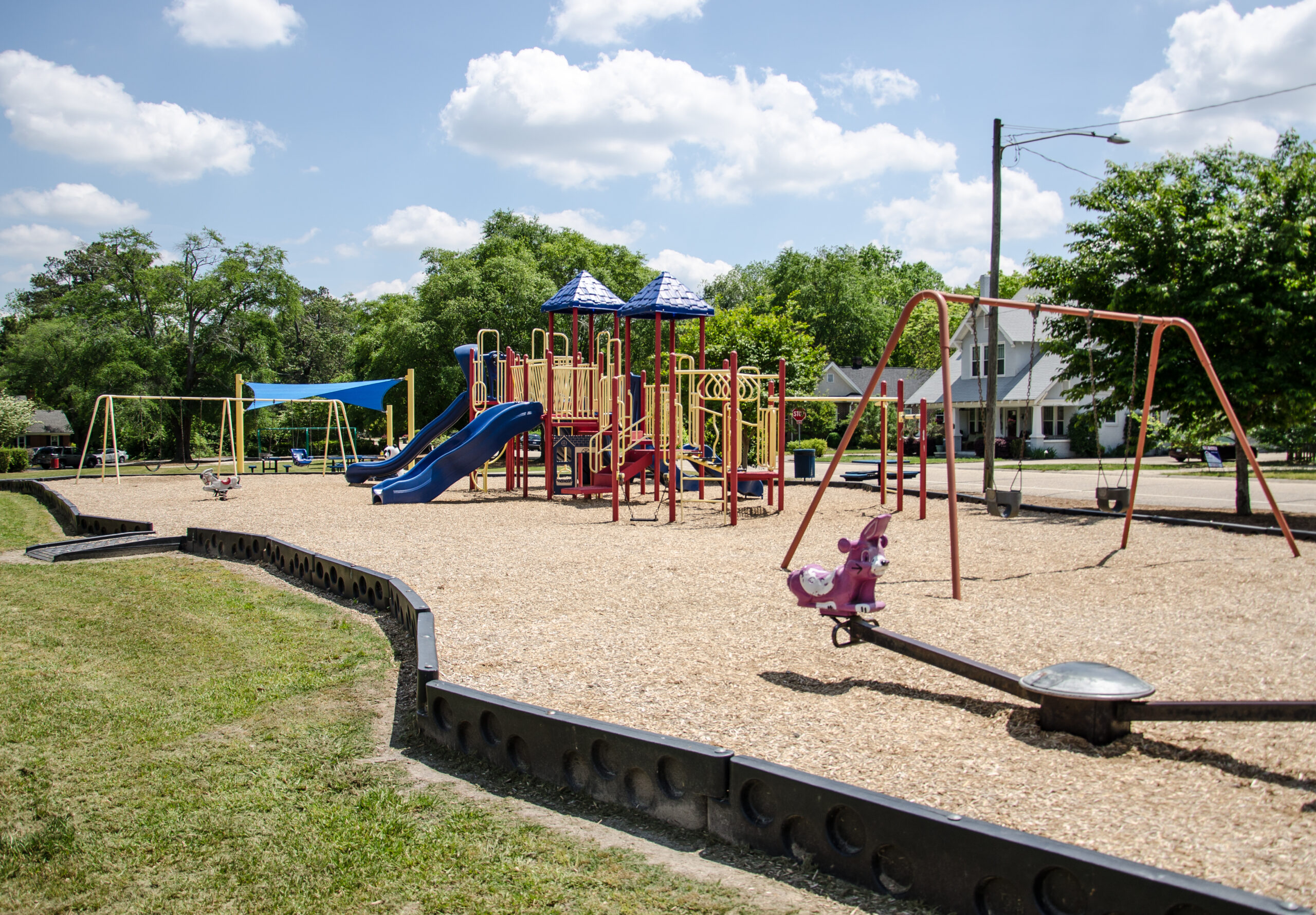
Fayetteville - Pine Forest
About
There is an explosion of interest and new development in the Pine Forest area of Fayetteville, and it’s quickly becoming one of the most sought-after communities. Methodist University anchors the area on the northern end of Ramsey Street, but the completion of 295 Loop is bringing new commercial and retail attention to an already booming residential development.
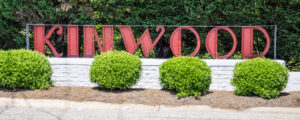
Neighbors
There’s a large concentration of military retirees here, and they go out of their way to look out for and include younger military families in the community. Families love the area for the nearby sports and outdoor recreation opportunities and the reputable charter schools in the Pine Forest zone.
Neighborhood Feel
Pine Forest is predominantly made up of established, older neighborhoods with large lots and mature trees, some even backing up to forested land. King’s Grant is the most well-known community, and King’s Grant II offers a gated entry, a golf course, and luxury homes. Several master-planned subdivisions are being built a little farther out and offer personalized construction options and neighborhoods.
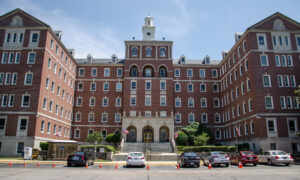
Points of Interest
- Jordan Soccer Complex
- Methodist University
- Clark Park and Nature Center
- Cape Fear River Trail
- ZipQuest Waterfall & Treetop Adventure
- Fayetteville VA Medical Center
Big Plus
- This area has great shopping, and they’re still building! Panera, Chick-fil-A, Lowe’s Home Improvement, and one of Fayetteville’s nicest Walmarts are located on Ramsey Street.
- It’s an easy drive to downtown Fayetteville, Fort Bragg’s north side, the Skibo shopping areas, and I-95.
- If your child is serious about soccer, you’re going to be spending a lot of time at the Jordan Soccer Complex.
- Methodist University offers educational, employment, and cultural opportunities.
- The Cape Fear River Trail runs almost the length of Ramsey Street; it’s great for outdoor recreation and is a favorite locale for family photos.
Things to Consider
- This area is booming with construction and growth, so it’s busy, congested, and noisy sometimes. Traffic on Ramsey Street can be heavy during peak times, and you’ll be sitting at your share of stoplights.
FUQUAY-VARINA
About
Farther away from Fort Bragg, you’ll discover some of the hidden gems of the rural Piedmont region. Fuquay-Varina is one of those finds. The homegrown feel and small businesses in this quaint downtown make it worth a day trip from other areas. It’s positioned roughly halfway between Fort Bragg and Raleigh, making it attractive for spouses interested in working or attending school in the Raleigh/Durham area. The town is compact with the barest of amenities, but you’ll love how everything about it screams “mom and pop.”
Neighbors
This is small-town southern living at its core, and people here value the quiet, laid-back, “front porch” lifestyle. The people here are hospitable, welcoming, and neighborly. Quite a few military families settle down here, usually for the proximity to Raleigh.
Neighborhood Feel
The homes in newer neighborhoods (the 1990s to today) are spacious and on large lots. Subdivisions are widely dispersed and have a rural feel. On a scenic drive through the country, you’ll happen upon a single-street development with ten or so houses, then go through another 10 minutes of country scenery before seeing the following subdivision. There’s a historic district with older homes, but the inventory is pretty low, so most sales concentrate on the area’s newer construction. Whether you opt for old or new, you’ll need to purchase new cushions for the front porch rocking chairs.
Points of Interest
- Mineral Springs Park
- Fleming Loop Park
- Fuquay-Varina Dog Park
- Freedom Balloon Fest
Big Plus
- The area boasts two distinct downtown areas, one in Fuquay and one in Varina. Still, both are replete with local craft breweries, ice cream parlors, florists, restaurants, coffee shops, pizzerias, and more.
- Here, you’ll find quiet, country living with modern home builders offering the latest residential amenities.
- You’ll have a convenient commute to Raleigh from this area.
Things to Consider
- It’s pretty far away from Fort Bragg, and city-style amenities and conveniences are going to be at least 30 minutes away. There’s not much by way of entertainment and outings, so this is not the place for someone who wants to be in the heart of it all.
School Scoop
- The public schools in Fuquay-Varina belong to Wake County Public School System or Harnett County Schools.
- In North Carolina, children can attend their neighborhood schools or charter schools. Low-income students are eligible for scholarship funding to attend private schools. Under the federal No Child Left Behind law, students attending a Title I school designated as “in need of improvement” have the right to participate in a higher-performing school in the district.
Highlighted Areas
- The Village of Charleston
- Historic District
- Tyler Park
Hope Mills
About
Hope Mills is technically an incorporated area of Fayetteville, which we could label “Gray’s Creek” after the high school, but we feel it deserves its own space. The town’s history dates back to the 1700s when it was settled by Scottish highlanders, who capitalized on the abundance of lumber and proximity to the Little Rockfish Creek and the Cape Fear River. Sawmills, gristmills, lumber camps, and pottery ovens anchored the area’s economy, and soon after, a textile boom introduced cotton factories and mills. In 1865, General Sherman marched through Cumberland County, and his torches destroyed most of the cotton mills except for one. The fortuitous Bluff Mill was renamed Hope Mill, and the surrounding settlement later took the name.
Today, Hope Mills is a quaint town that’s removed from the hustle and bustle of Fayetteville and is preferred by many for its slower pace and quiet neighborhoods. It is close to the amenities of Fayetteville, has desirable schools, and is close to I-95—especially if you’re headed south. And because of an influx of military families, there has been a lot of new development.
Neighbors
Many military families settle in Hope Mills. As with much of the region, the locals are friendly and welcoming to servicemembers, and you’ll find residents of all ages. The community is tight-knit, and you’re likely to have military neighbors. If you’re looking for somewhere kids can “roam” and where families can rotate homes for Friday night pizza, you should probably look into Hope Mills.
Neighborhood Feel
Suburban subdivisions are mixed among the older neighborhoods, but they all share a quiet, country feel. New developments are being built, providing the opportunity for personalized construction, more square footage, and larger yards.
Points of Interest
- Millstone Theater and Shopping Center
- Fantasy Lake Water Park
- Cypress Lakes Golf Course
- Putt-Putt Fun Center
- Dirt Bag Ales Brewery and Farmers Market
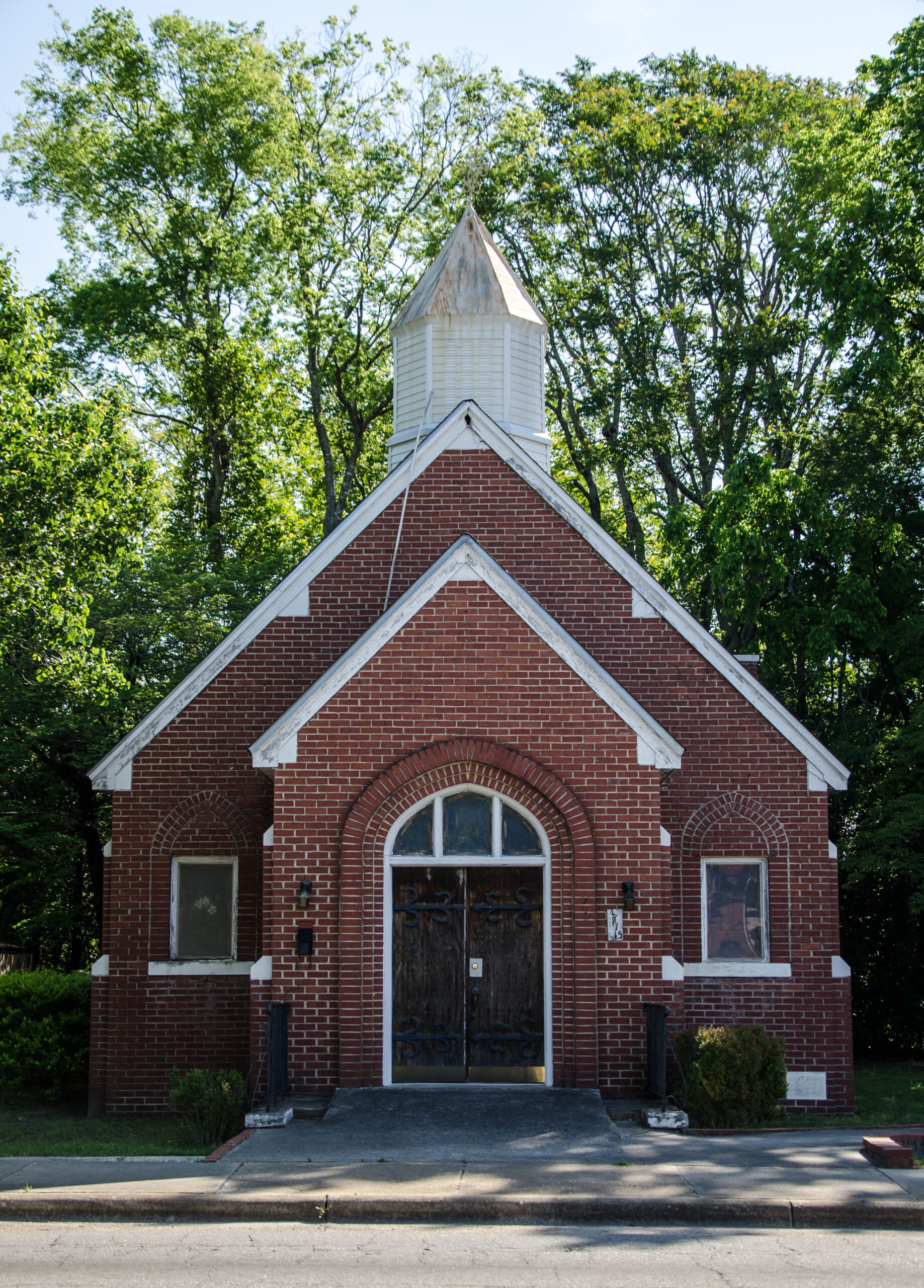
Big Plus
- Hope Mills has excellent schools and is considered a quieter alternative to living in Fayetteville. The Gray's Creek area is raved about for the community feel, quality of homes, and generally family-friendly vibe.
- This area is convenient to I-95, so if you plan to travel south frequently, this is your spot. You're also close to the Fayetteville Regional Airport.
- The homes are considered very affordable here, which is great if you're looking for a starter home or investment property.
Things to Consider
- The Hope Mills Lake and dam powered the mills and was historically a central part of the town's identity. However, The Pond, as referred to by locals, has been fraught with setbacks for decades. The dam
failed in 2003 and drained the lake. The empty lakebed remained an eyesore until 2010, when the city repaired the dam. The lake was refilled, only to suffer another catastrophic setback when a sinkhole destroyed the new dam. By 2018, a new dam finally proved successful, and the lake is once again a community focal point. Boating and kayaking on the lake are popular pastimes, though it is a no-wake lake so take it easy! Swimming is permitted, but pay attention to the water's bacteria levels during the summer heat.
- Even though you feel like you’re out in the country, you’ll still be paying Cumberland County taxes and insurance rates.
- The commute is reasonable at roughly 30 to 45 minutes, but for Fort Bragg standards, it’s considered a hike. If you’re commuting to the north side of post (Pope Field), you may be looking at a 45-minute drive at a minimum.
School Scoop
- Hope Mills contains seven primary and secondary schools. Public schools in Hope Mills belong to Cumberland County Schools.
- The two high schools that serve the Hope Mills area are South View High School (which overlaps with the city of Fayetteville) and Gray’s Creek High School. Review your options and check out the zoning when looking at homes.
- In North Carolina, children can attend their neighborhood schools or charter schools. Low-income students are eligible for scholarship funding to attend private schools. Under the federal No Child Left Behind law, students attending a Title I school designated as “in need of improvement” (several in Cumberland County) have the right to attend a higher-performing school in the district.
Highlighted Areas
- Roslin Farms
- Braxton Village
- Cypress Lakes Village
Spring Lake
About
Spring Lake is a small town that sits just north of Fort Bragg. Two large highways cross through the town and serve as main arteries onto the post and down into Fayetteville. The town is fairly densely populated and has abundant rentals, apartments, and affordable housing options. Hotels, shopping centers, chain restaurants, and strip malls are plentiful and line the roads onto post. It’s the closest community to the north side of Fort Bragg, and for that reason, most of your neighbors here will be in uniform.
If you travel north, slightly beyond Spring Lake, you’ll reach Harnett County and the Anderson Creek Club. Anderson Creek is technically a township in southern Harnett County. Still, it is served by Spring Lake municipalities, and many people refer to the area as an extension of Spring Lake.
Neighbors
There are a lot of military residents here because of the proximity to the base and the housing affordability. Young singles like it, and you can definitely “pocket BAH,” but some areas may not be ideal for families. It’s busy and comes with a lot of traffic and commuter noise.
Families tend to gravitate to the farther reaches of the Spring Lake area and up into Harnett County for space, quiet, and a tighter feeling of community. The Anderson Creek Club is an extremely popular gated community that has some wonderful amenities and draws military families and locals, as well as retirees.
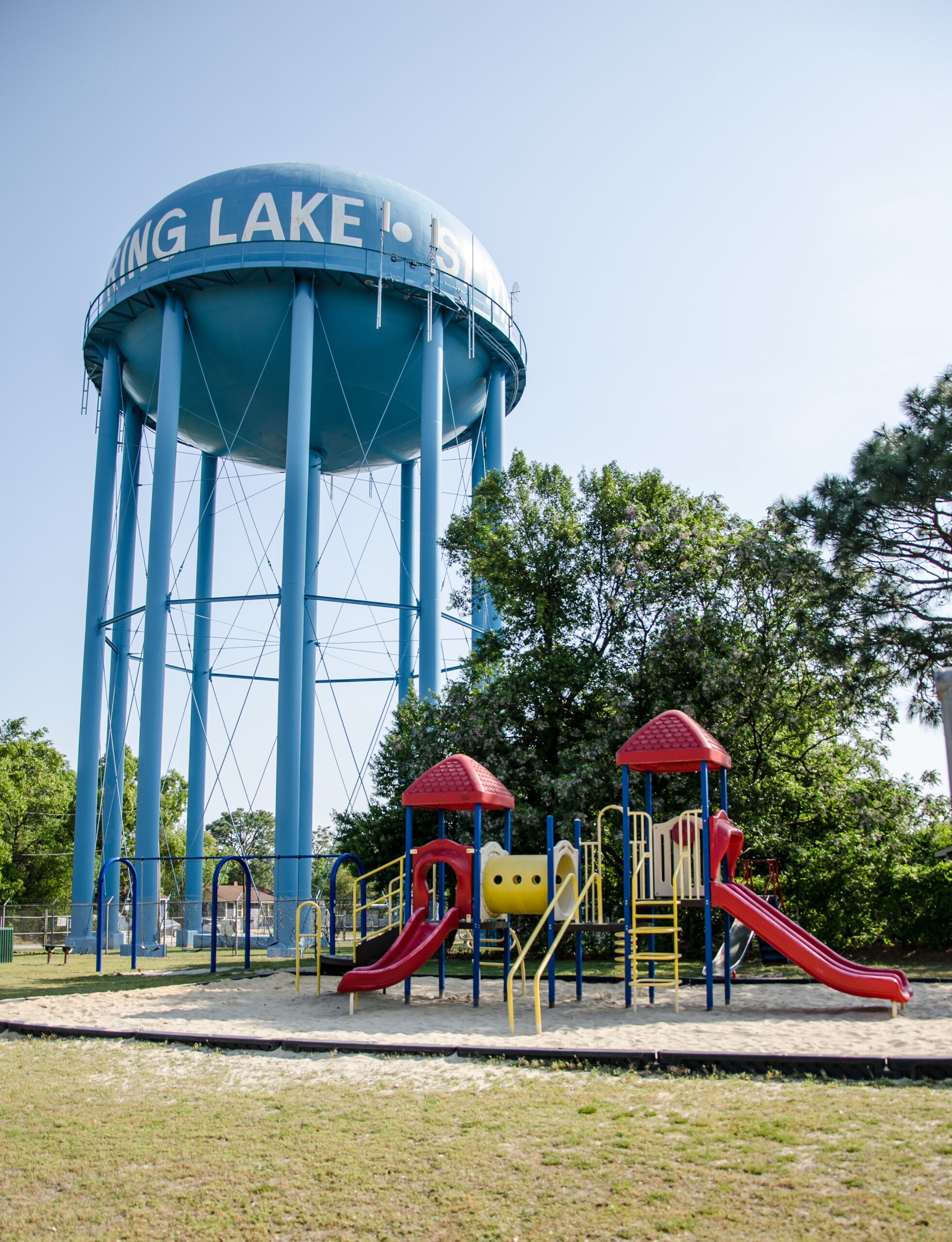
Neighborhood Feel
Apartments are abundant, and the homes in the town of Spring Lake are older and a little less loved than those in other communities. Do your research when looking for a home to purchase or rent here, especially if you have children.
Anderson Creek homes are spacious and fairly new and come with all the amenities of a golf community (think pools, gated entries, well-lit sidewalks, active community calendar).
Points of Interest
- Carver’s Creek State Park
- Sandhills Farmers’ Market
- Clay Target Center
- MegaPlay
Big Plus
- Anderson Creek Club is a popular residential area located a bit farther north than Spring Lake “proper,” but still has a Spring Lake address. Within this gated community, there are 19 neighborhoods, pools, golf courses, and wonderful neighborhood amenities. You’ll find a ton of military here and retirees, but the commute can be tough because you’ll need to come into the base through Spring Lake.
- Being on the north side of post, Spring Lake and Anderson Creek are pretty convenient to Raleigh. It’s less than an hour’s drive to get to all the shopping, dining, entertainment, and employment opportunities in the Triangle.
Things to Consider
- Traffic is a serious consideration in Spring Lake. Most commuters travel south on Highway 87 (Bragg Boulevard), and the roads are pretty stressed. Bottlenecks are frequent, and rush hour can be intense, but the new 295 Loop is helping with security concerns on post and redistributes some of the traffic.
- Anderson Creek doesn’t look that far on a map, but most people consider it fairly far away. The commute to Fort Bragg is pretty congested, and going into Fayetteville is a significant trip.
School Scoop
- Public schools in Spring Lake are part of either Cumberland County Schools or Harnett County Schools.
- If you’re in the town of Spring Lake, you’ll be zoned to Cumberland County Schools in the Pine Forest area. Anything north of Spring Lake (like Anderson Creek) is zoned to Harnett County Schools.
- In North Carolina, children can attend their neighborhood schools or charter schools. Low-income students are eligible for scholarship funding to attend private schools. Under the federal No Child Left Behind law, students attending a Title I school designated as “in need of improvement” (several in Cumberland County) have the right to attend a higher-performing school in the district.
Highlighted Areas
- Anderson Creek Club
- Cooper’s Creek
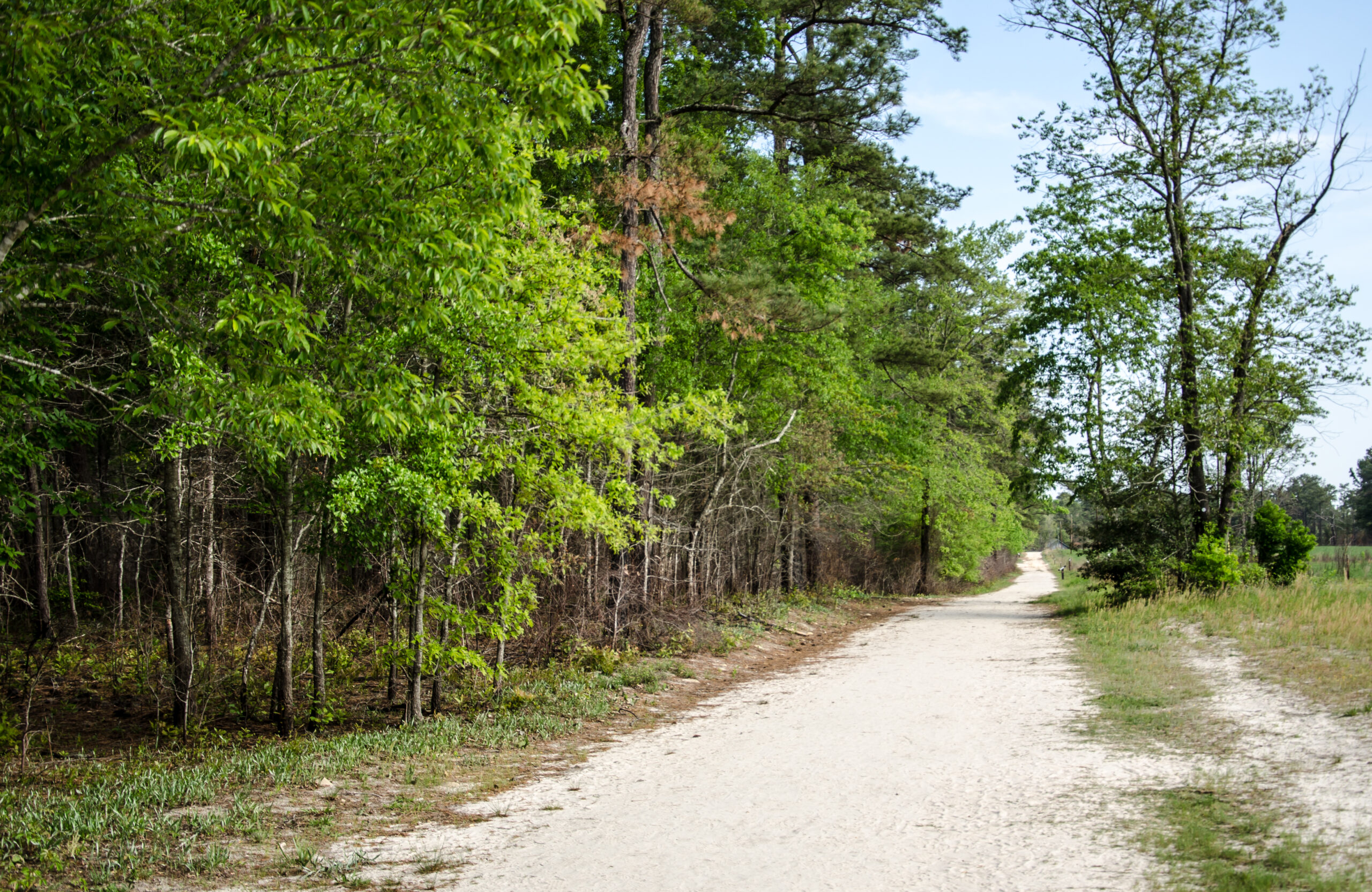
Raeford
About
Raeford is just south of Fort Bragg and borders the southwestern edge of Fayetteville. This Hoke County city was originally settled by Highland Scots, as was most of the Cape Fear region. The name “Raeford” was adopted by pairing two of the most prominent settlers’ names, McRae and Williford (American pop culture at work even in the 17th century!). Military families flock to Raeford and have concentrated in the Rockfish area, just across the Hoke County line. Though the area is considered fairly rural, or “country,” there are plenty of options for shopping (several Walmarts, supermarkets, and home improvement stores), chain restaurants and fast food, and golf courses, as well as some recreational activities and farms with local produce. The actual city of Raeford is pretty small and not exactly an attraction, so most people rely on nearby Fayetteville.
Neighbors
The Rockfish area has a heavy military representation because of the proximity to post and affordable houses. Farther away from the county line, you’re likely to find farms and homesteads, pockets of multiple generations of interconnected families.
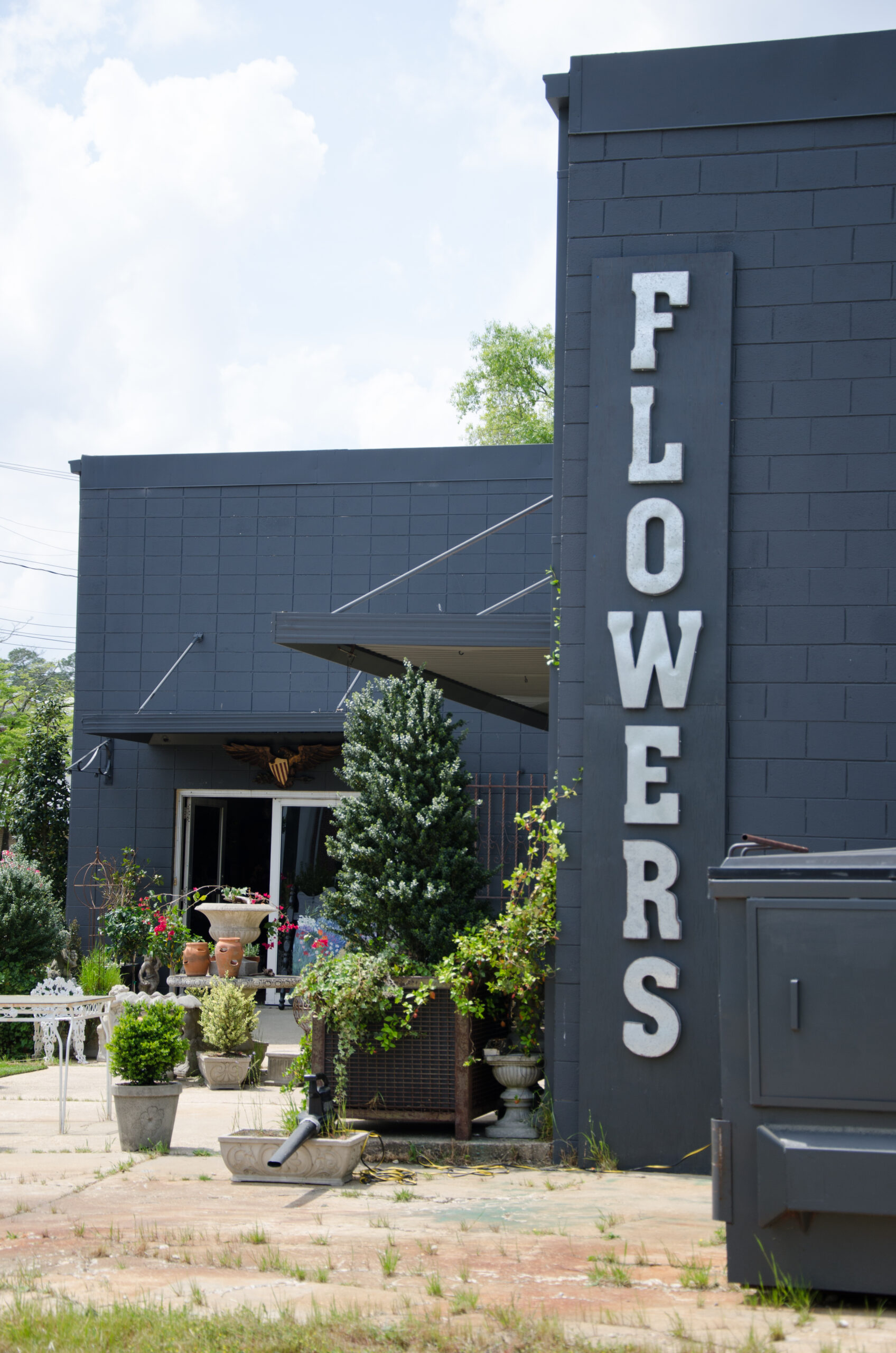
Neighborhood Feel
The area is flat and rural, and the neighborhoods are widely dispersed. There’s a lot of development just across the Hoke County line and is a big draw for those looking to escape Cumberland County taxes yet still be close to Fayetteville. In recent years, farmland has been converted by developers, so master-planned communities are the norm and offer a range of home sizes and prices.
Points of Interest
- Gillis Hills Farm
- Paraclete XP – Indoor skydiving
- Carolina Horse Park
- Wide Open Motocross Park
- Bayonet at Puppy Creek – Golf course
Big Plus
- Some areas of Raeford are convenient to Camp Mackall, and several gates lead onto Fort Bragg, making it easy to get to work, wherever that may be.
- There’s much less congestion in Raeford than in Fayetteville.
- Raeford is located between Fayetteville and Southern Pines so you can venture out either way for dining, shopping, and entertainment.
- Some of the newer developments have amenities like pools and community centers. These perks are somewhat hard to find, and public or private pool options are limited.
- Hoke County taxes are much lower than in Fayetteville or Moore County (Southern Pines area), and you can buy a lot more house for your money in
this area.
Things to Consider
- A lot of homes are on septic systems and have minimal and very young landscaping. The area used to be farmland and has only recently been parceled out to developers.
- The Rockfish area is split between Hoke and Cumberland counties, so take school district and tax implications into consideration when deciding where to live.
- The homes are larger but with limited floor plan options. The area is spread out, but some subdivisions are fairly densely populated and don’t offer much privacy.
School Scoop
- The public schools in Raeford belong to Hoke County Schools. Some areas of Rockfish can potentially zone into Jack Britt (Cumberland County), but then you’re giving up the Hoke County tax break. Be aware of the county lines and consider school zones when purchasing or renting.
- In North Carolina, children can attend their neighborhood schools or charter schools. Low-income students are eligible for scholarship funding to attend private schools. Under the federal No Child Left Behind law, students attending a Title I school designated as “in
need of improvement” have the right to attend a higher-performing school in the district.
Highlighted Areas
- Westgate
- Oaks at Westgate
- Galatia Hills
- Turnberry
- Rockfish
- Bedford
- Wedgefield
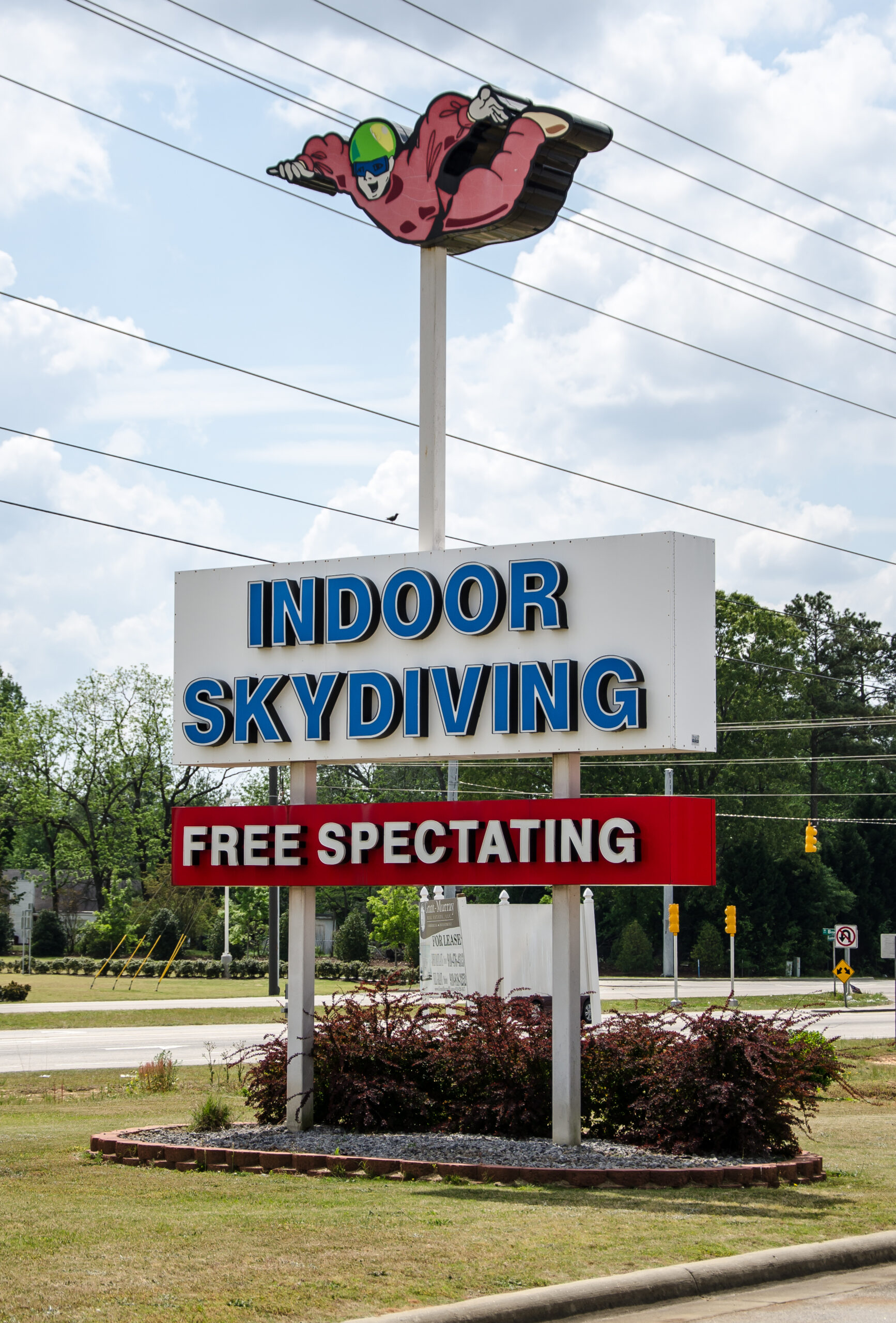
Moore County
About
If you’re looking to escape to a quiet refuge with a slow pace, you’ll love Moore County. To the west of Fort Bragg’s training areas lies the “Home of American Golf” and the adorable communities of Southern Pines, Pinehurst, and Aberdeen. Forests of longleaf pine trees, horse stables, world-class golf courses, and picturesque main street shopping provide the backdrop to this family-friendly locale. Most people consider the commute when living out here significant, but it’s a reasonable trade-off for some. There are plenty of local shops and restaurants to fulfill your shopping, dining, and day-to-day needs. The reputable schools, lower crime rates, and small-town feel attract many people.
When we say “slow,” we don’t mean asleep. The independently-owned restaurants and shops are amazing. Out-of-towners often drive to Moore County for a special night out or just to get away, and Pinehurst Resort is a popular venue for military balls. The craft brewery scene is thriving, and there are coffee shops, old-fashioned ice cream parlors, bakeries, yoga studios, farmers’ markets, and even food truck festivals in the area.
If you are into country living, Vass and Cameron are two other areas of Moore County that are worth a look! Cameron is best known for its antique district, and the town is even listed on the National Registry for Historic Sites. Twice a year, it hosts a popular antique festival that draws vendors from around the country.
There are some areas of new, affordable construction closer to base in both Vass and Cameron, but these towns are primarily residential and don’t have many amenities.
Neighbors
This area has a variety of residents, including families, retirees, and a very healthy mix of military. Its proximity to Camp Mackall is a draw for those working with Special Forces selection and training, so you’ll see strong SF representation. However, soldiers working on Fort Bragg’s main post will drive upwards of 45 minutes to get to work. For this reason, along with SF’s penchant for beards and civilian clothes, the area isn’t particularly overrun with uniforms.
Neighborhood Feel
Moore County offers traditional subdivisions, historic downtown districts, and resort communities at different prices. Whispering Pines is a small community with beautiful lakefront homes. Southern Pines, or “SoPi,” if you want to sound cool, is known for its quaint bungalows and stately Victorians blocks off the main street. Pinehurst is a golf community, and the neighborhoods are aligned with each of the nine courses, the famed Pinehurst #2 being the most prominent. Aberdeen is slightly more modern, with great shopping options and more traditional subdivisions where you can find affordable new construction mixed in with older homes. The areas are home to very tight-knit communities with active community watch programs. It’s said the police know the residents by name and can pair them with the vehicles they drive! It’s seriously like taking a step back in time.
Points of Interest
- Pinehurst Resort and Spa, along with their nine championship golf courses
- Southern Pines Train Station
- Southern Pines’ historic downtown shopping and dining options
- Cannon Park – 17-acre recreational facility (Pinehurst)
- Malcolm Blue Farm – 1825 farmhouse and museum
- Pinehurst Greenway
- Weymouth Woods
- Southern Pines Reservoir Park
- Southern Pines Brewing Company
Big Plus
- Most of your everyday shopping needs can be fulfilled in Aberdeen with the big-brand stores or at small independent shops in Southern Pines. Cary and Raleigh are relatively close and can fill any gaps in amenities or make for a fun getaway.
- The restaurants and shops here have a local flare and are mostly independently owned. If you’re obsessed with reclaimed vintage home decor, fair-trade and sustainable items, organic anything, and even farm-to-table fare, you’ve found your spot.
- The area has an extensive parks system and a beautiful Greenway for outdoor fun. There is also an abundance of youth recreation opportunities.
- The schools in Moore County are considered by many to be preferable to surrounding counties and districts.
- The active neighborhood watches and small communities ensure you’ll feel safe (even when your other half is away). Neighbors, locals and military alike, tend to look out for one another.
- The area is super convenient to Camp Mackall, with a roughly 15-minute commute.
Things to Consider
- To get to Moore County from Fort Bragg, you must traverse the extensive training areas and drop zones on the backside of the post. It’s scenic but slow-going, as it’s a two-lane road with a strictly enforced speed limit. Commutes typically take 30 to 45 minutes at best. Enjoy the quiet, and pray you don’t get stuck behind a training convoy!
- Gas and utilities tend to be more expensive in Moore County, and the price of homes is higher than in other areas. This is not an area to pocket BAH.
- There are a limited number of big-box shopping options, so you’ll need to hike to Fayetteville or Cary for Target. The chains that do reside here are concentrated primarily in Aberdeen.
School Scoop
- Moore County Schools serves the entire county. The charter schools are popular, and Sandhills Farm Life Elementary, Moore Montessori, and Pinehurst Elementary are highly recommended.
Highlighted Areas
- Southern Pines is a charming locale with older historic homes surrounding the main street.
- Whispering Pines is a small community with beautiful lakefront homes.
- Pinehurst has a small, historic town area with golf-themed shops and a handful of cute restaurants. Homes are mostly resort-style subdivisions.
- Aberdeen is centrally located, and you can find newer construction and affordable homes as well as apartment homes.
- Vass is an extremely rural area located just north of post and connects Spring Lake and Southern Pines. There are a couple of communities with newer construction, but look into the HOAs and ensure they’re functioning.
- Cameron is another rural community known for its concentration of antique stores and the biannual antique fair, but there’s not much by way of amenities.
Sanford
About
Sanford is another one of the small towns that surround the Fort Bragg area. Like Fuquay-Varina, it offers affordable housing and a “town that time forgot” escape from Fayetteville. Known for its quaint downtown and historic district, Sanford also has a more built-up shopping district with big-brand shopping, dining, and grocers.
Sanford is a top brick producer for the country because of the unique soil composition where the white sand from the coast meets Piedmont clay. It sits just northeast of post and is practically equidistant between Fayetteville and Raleigh, with only a 30-minute drive to either locale. The area is markedly blue-collar, with many of the area’s top employers being in the manufacturing, textile, and pharmaceutical industries.
Neighbors
Sanford’s vibe is decidedly quiet and slow-paced. Your neighbors here are typically southern and hospitable to the core. There’s a decent mix of military and civilian families and retirees.
Neighborhood Feel
Carolina Lakes and Carolina Trace golf communities are probably the two most popular neighborhoods in Sanford, and for good reason. These are gated communities with fantastic amenities and an array of home styles at various price points, all situated on a picturesque lake. Most of the neighborhoods in Sanford are pretty far from “town,” so expect to drive a bit to get home from the grocery store. And while subdivisions can be packed, they are often separated by a ten-minute drive through farmland.
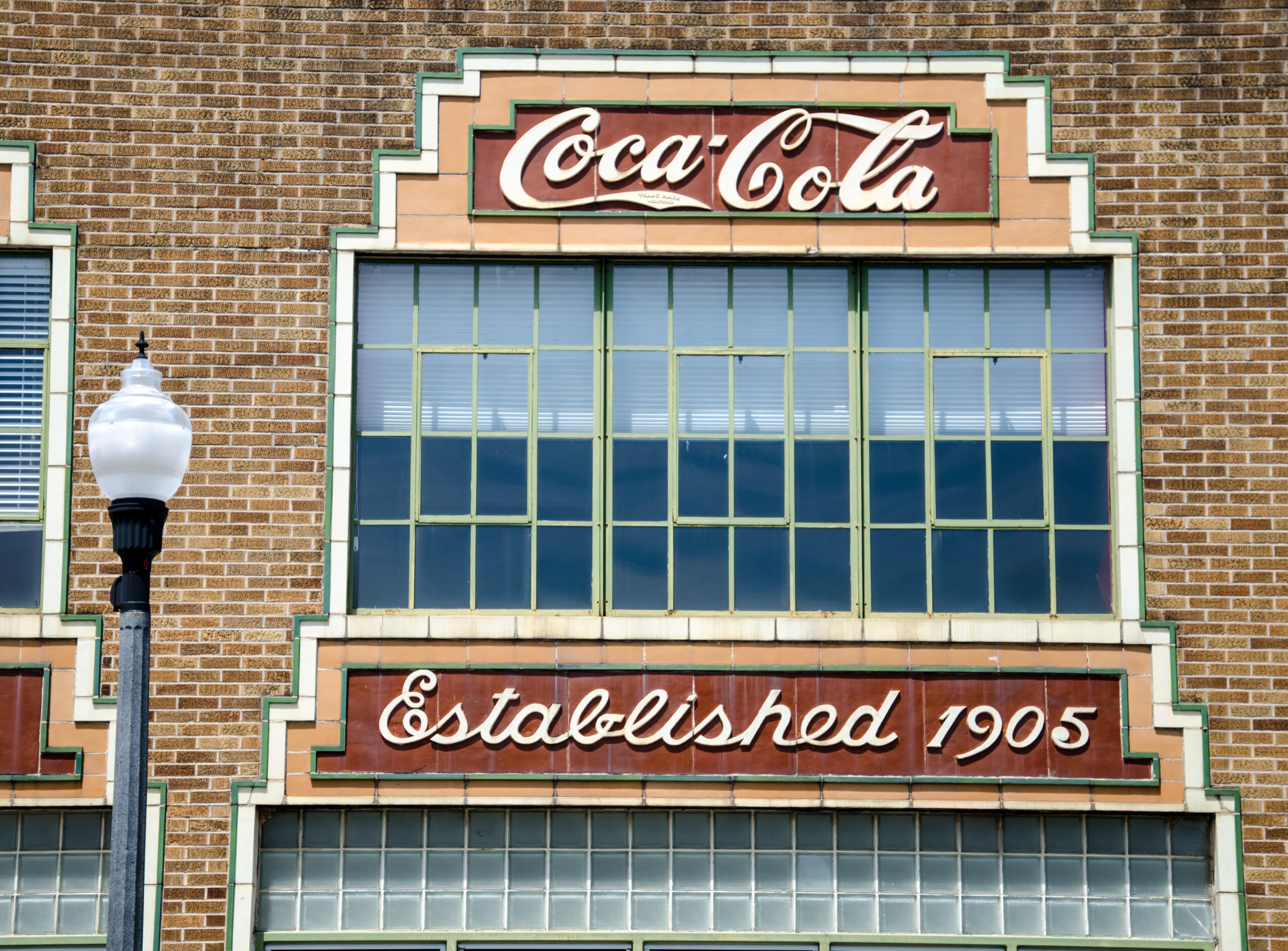
Points of Interest
- Raven Rock State Park
- White Pines Nature Preserve
- Deep River Sporting Clays and Shooting School
- Weymouth Woods Nature Preserve
- Sanford Golf Course
- Carolina Lakes Golf Course
- Carolina Trace Golf Course
Big Plus
- Great location for those working on Pope Field or North Bragg.
- There’s a fantastic birth center in Sanford called the Women’s Birth and Wellness Center that offers midwifery and natural birth options for those interested in a holistic approach to pregnancy and women’s health care. This is one of the few birthing tub options available in the region.
- Carolina Trace and Carolina Lakes are big draws to
the area, and you can find great golf resorts/gated community living at reasonable prices. - Small-town living with name-brand shopping available like Chick-fil-A, Walmart, Hobby Lobby, Buffalo Wild Wings, etc.
Things to Consider
- You could commute upwards of 45 minutes to an hour to Fort Bragg’s main post.
- Know that you’ll be “out in the country” in Sanford. If you have friends in Fayetteville or farther (Raeford or even Southern Pines), it will be at least a 40-minute drive for dinner. Either get plugged into the community here or spend a lot of time in the car for work or play in town.
School Scoop
- Public schools in Sanford are in Harnett County Schools or Lee County Schools.
- In North Carolina, children can attend their neighborhood schools or charter schools. Low-income students are eligible for scholarship funding to attend private schools. Under the federal No Child Left Behind law, students attending a Title I school designated as “in need of improvement” have the right to attend a higher-performing school in the district.
Highlighted Areas
- Carolina Lakes
- Carolina Trace
- Falls Church
- Historic District

Looking at relocating?
Enter your information below and we will reach out to help the process.
7 Reasons You Should Consider Buying a Home
1. TAX ADVANTAGES
To encourage homeownership, the IRS has provided many tax breaks for owning a home. Credits may be available for specific home improvements, such as using clean energy or for qualified first-time home buyers. The way most homeowners see those advantages is through income tax itemization and deductions like mortgage interest and real estate taxes.
2. STABALIZE MONTHLY HOME COSTS
Owning your own house is one of the safest bets on stabilizing your monthly home costs. There’s no worry of rent getting increased significantly after each year of living in someone else’s home. Additionally, when you answer to yourself, there is no worry of landlord changes or unexpected lease termination.
3. HOUSE HACKING
Generally speaking, house hacking is a smart strategy that involves renting out a portion of your primary residence as a means of generating income to offset your own living expenses. Think turning your finished basement or mother-in-law quarters into an AirBnB! Or consider purchasing a multi-unit duplex or triplex: live on one side and rent out the other! If your home making money while you’re living in it doesn’t sound like your thing, there’s always renting it out after you PCS as an income generating investment property.
4. Increased Privacy
Generally speaking, house hacking is a smart strategy that involves renting out a portion of your primary residence as a means of generating income to offset your own living expenses. Think turning your finished basement or mother-in-law quarters into an AirBnB! Or consider purchasing a multi-unit duplex or triplex: live on one side and rent out the other! If your home making money while you’re living in it doesn’t sound like your thing, there’s always renting it out after you PCS as an income generating investment property.
5. Pets Are Welcome!
For those who choose to rent instead of buying, it can be extremely difficult to find rentals who allow for your
four-legged, furry friends. Landlords often require hefty pet deposits or place heavy restrictions on the number of pets and breeds they allow—if they will even allow pets. When considering quality of life, including beloved pets and the indoor and outdoor space available to them matters. Having the flexibility to include ALL members of your family as a homeowner is priceless!
6. Pride of Ownership
One of the greatest benefits of owning your own home is the pride of ownership that comes along with it. Not only are homeowners more inclined to take good care of their investment with routine maintenance and cleaning, but also they are free to make design choices ranging from hanging artwork on the walls, to paint colors, to customization of closets, electronics, and more. As military families who relocate frequently, having your home reflect who you really are feels important.
7. Safe and Stable Long Term Investment + Forced Savings
Owning a home has historically been one of the safest, lowest risk financial investments that tends to have long-term stability and success. As your home value appreciates and your mortgage balance decreases, what’s left is growing equity with an eventual paid off home. Making a monthly house payment is akin to setting aside a specific amount each month into a savings account—it’s a little difficult to access in the moment, but over time it can build into something significant in the form of equity.

FIVE RESOURCES TO HELP YOU IN YOUR RELOCATION PROCESS

Your PCS is underway!
The home buying and moving transition process has begun. Now what? If it feels like there are a million things to do, don’t fret because you don’t have to do them all yourself. During the relocation process, there are many service providers that can assist you in making your move a smooth one.
Consider these five resources to help you in the process
1. MOVING COMPANIES
Sure, the military offers transportation and relocation services, but many service members decide to coordinate the transfer of household goods themselves. Not only can you often earn money on the difference between moving costs and weight allowances, but you can be assured that you have more control over your belongings. Services that moving companies offer can range from delivery of boxes and pods for the “you-pack” model all the way to full-service logistics companies that will do all of the packing, loading, driving, and unpacking for you.
2. STORAGE
Whether you need to store your household goods for a few weeks until you close on your home or you decide that you have more stuff than square footage, storage companies abound. Sizes, conditions, and contracts vary widely so be sure to do your homework before you commit. Particularly in climates with extreme cold, heat, or humidity, it is important to consider using only climate-controlled storage to ensure the protection of your furniture and temporarily unused items.
3. TEMPORARY HOUSING
It is not uncommon for there to be a short gap of time during a military move between when you arrive at your new duty station and your new home being available to inhabit. No longer are hotels the only option for sticking out a few days or weeks during the wait. Vacation Rentals by Owner (VRBO) and Airbnb are great options to make you feel more at home while you wait for your home. In fact, why not take advantage of seeing your new city through the eyes of a tourist? Find a location near new local attractions and dining and enjoy a few days of getting to know the lay of the land.
4. USPS/IRS
Once you get settled in at your new home, it’s important that you alert agencies that will make sure your current and up-to-date address is on file. The United States Postal Service (USPS) and the Internal Revenue Service (IRS) are two of the most important and by doing so, any important mail or documents in your name should be forwarded or sent along to your new address. It’s also a good idea to notify banks, credit card companies, and other debt collectors of a change of address. These days nearly all of these transactions can be handled online.
5. DISCARD & DONATE SERVICES
No matter how much you purge, toss, organize, minimize, or donate before you pack up the moving truck, it never fails that after you get unpacked on the other side there seems to be more stuff to declutter. Discard and donate services can help with this. Many are a phone call away and will happily come to your residence for a pickup. Others are structured where you simply drop off at a store. A lot of these services are charitable organizations and will offer you documentation for your own taxes based on your donation. It’s a win-win: you downsize by donating, and someone else benefits from your use of your items.

